Screensavers for iPhones: Personalize Your Device
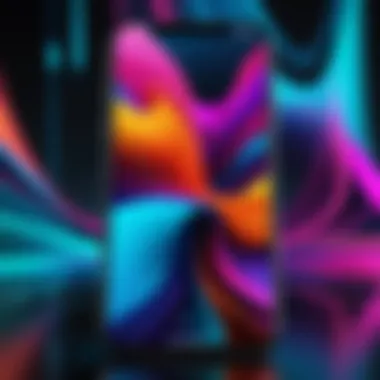
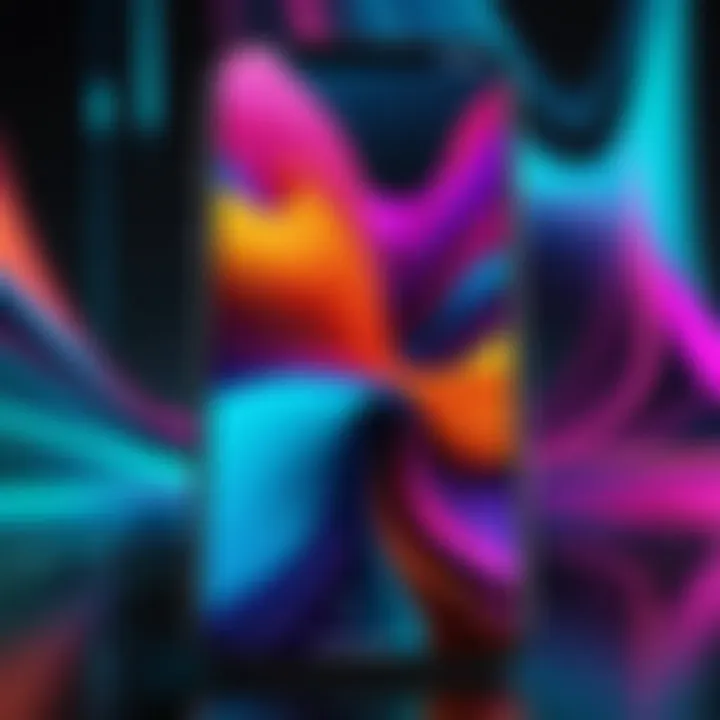
Intro
Screensavers on iPhones often go unnoticed. Yet, they serve more than just an aesthetic role. Understanding how screensavers function can enhance the user's experience and device personalization. They can aid in preserving battery life while also allowing for self-expression through design.
The landscape of screensavers consists of various options including default settings and customizable features. This guide will delve into their significance, explore different types, and discuss how the right choice can impact device functionality and design.
Key Features
Design and Build Quality
Screensavers can significantly contribute to the visual appeal of an iPhone. Users have access to themes that reflect personal style or current trends. These themes can leverage high-resolution images, vibrant colors, and animations. The choice of screensaver is not just about looks; it can also show the device's capability in displaying rich media. A well-designed screensaver can provide a seamless transition from the lock screen to the home screen.
Display and Performance
When it comes to performance, screensavers can actually influence how the device operates. Depending on the complexity of the screensaver, it may impact battery performance. For instance, a dynamic screensaver may use more power compared to a static one. Choosing a simple screensaver enhances battery longevity. Thus, users should balance the visual allure with power efficiency. In situations where energy conservation is vital, opting for a minimalist design is wise.
"A screensaver might just be pixels on a screen, but the proper choice can enhance both visual enjoyment and device longevity."
Customization Options
Customization is where users can truly make their device their own. From selecting images from a photo library to adjusting display settings, the possibilities are extensive. Users can even sync their screensaver with events or time of day through specific apps.
- Photo Gallery: Users can choose personal photos, showcasing memories or family.
- Live Wallpapers: These dynamic options mimic movement and bring the device to life.
- Time-based settings: Some screensavers change based on time, providing a fresh look periodically.
The opportunity to curate a unique screensaver that reflects individuality will enhance the overall satisfaction with the device.
Impact on Battery Performance
When selecting a screensaver, it is crucial to consider the influence it has on battery life. Dynamic screensavers often use more power, particularly when they involve animations or frequent updates. On the other hand, static images lead to a more energy-efficient operation. To optimize battery life, users can sometimes choose to schedule when screensavers activate or adjust their settings to favor low energy consumption.
Ultimately, ensuring the right screensaver is not just about aesthetics. It involves a deeper understanding of how it affects the entire user experience and device performance.
Prelude to Screensavers on iPhones
Screensavers, often seen as an afterthought, play a significant role in the personalization and functionality of iPhones. In an age where user experience defines the success of technology, understanding screensavers becomes crucial for iPhone users who aim to enhance both aesthetics and practical benefits of their devices.
Understanding Screensavers
A screensaver serves multiple purposes, primarily acting as a protective measure for the device's screen and providing a visually pleasing backdrop. By preventing screen burn-in, particularly for OLED displays, screensavers ensure that the display remains vibrant and undamaged over time. Additionally, they offer a platform for users to showcase personal images or curated content that reflects their individuality and style. This simplicity yet utility of screensavers becomes apparent when one considers how extensively people engage with their devices daily.
Moreover, the rise of dynamic and interactive screensavers has opened new avenues for customization, allowing users to not only select static images but also to choose from animated options. This versatility addresses both personal preferences and functional requirements.
Historical Context of Screensavers
Originally designed to prevent screen burn-in on traditional CRT monitors, screensavers have evolved significantly since their inception. The first screensavers appeared in the 1980s, primarily for computers in office environments. Their main task was to protect the screen from displaying static images for too long, which could lead to permanent damage. As technology advanced, screensaver functionalities transitioned from simple animations to complex graphics filled with information and imagery.
When the iPhone was introduced in 2007, the need for screensavers shifted to enhancement of user experience rather than mere protection. While iPhones do not use screensavers in a traditional sense, the lock screen and wallpaper functions took on essential roles, reflecting the evolution of screensavers from manly protective measures to sophisticated elements of personal expression. Understanding this historical perspective lays the foundation for comprehending their current applications on modern devices, particularly iPhones.
The Purpose of Screensavers
Screensavers serve several essential functions on an iPhone. Understanding these purposes can help users maximize their device's utility and longevity. In this section, we will explore three primary benefits of screensavers: personalization and aesthetics, screen protection, and battery conservation.
Personalization and Aesthetics
One of the most significant roles of screensavers is to enhance the personal aesthetic of the device. Users can choose images or animations that reflect their interests or personal style. This is particularly important as smartphones are extensions of our identity in many ways. Customizing your screen with unique visuals can make the device feel more personal and relatable. Providing a personalized appearance improves the overall user experience, making the iPhone feel less generic and more tailored to individual preferences.
In addition, aesthetic screensavers can inspire creativity or evoke memories. Users often select family photos or artworks that resonate with them on a deeper level. Employing screensavers that convey a particular mood or theme can also affect the user's mindset when interacting with the device, fostering a more enjoyable and immersive experience.
Screen Protection
Another key purpose of screensavers on iPhones is to protect the screen. Prolonged exposure to static images, especially bright or high-contrast ones, can lead to screen burn-in or permanent image retention. Screensavers help to counteract this by displaying dynamic content or changing images after a pre-set time.
This functionality is essential for maintaining the integrity of the display. Additionally, moving screensavers can provide a visual break, which can refresh the screen and potentially extend its overall lifespan. Therefore, utilizing screensavers can not only preserve the aesthetics of the device but also serve a practical purpose in safeguarding the hardware itself.
Battery Conservation
One often-overlooked benefit of screensavers is battery conservation. When the iPhone is idle, they can help regulate power usage. Although screensavers still consume energy, many of them are designed to activate a lower power mode when the device is not in active use. By dimming the screen or switching to less resource-intensive visuals, they can significantly reduce battery drain.

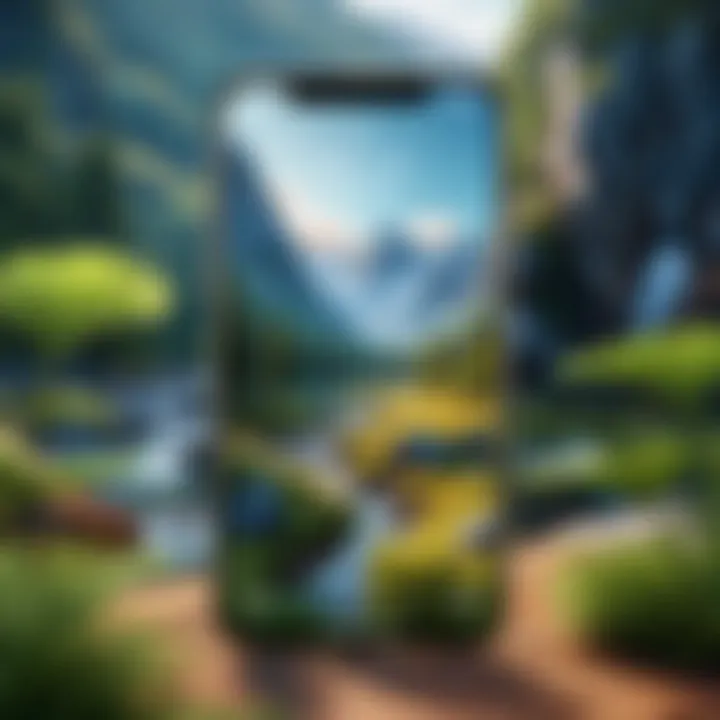
Furthermore, certain regular settings can optimize this process, allowing users to balance functionality with power efficiency. As such, choosing an appropriate screensaver can be integral to extending the device's battery life, which is critical for users who rely on their phones throughout the day.
"A well-set screensaver not only beautifies the device but also contributes to its longevity and efficiency."
Types of Screensavers Available
Understanding the different types of screensavers available on iPhones is essential for users looking to enhance their device aesthetics and functionality. Each type of screensaver serves a unique purpose, catering to diverse preferences and needs. By knowing the options, users can select screensavers that align with their lifestyle and enrich their smartphone experience. Below are the primary types of screensavers that users can choose from:
Static Images
Static images are one of the simplest forms of screensavers. These screensavers feature a single image that displays when the iPhone is inactive. They can be personal photos, artwork, or any image found in the device's gallery or online. One of the significant advantages of static images is their minimal effect on battery life, making them an ideal choice for users who wish to preserve their device's energy while still personalizing their screen.
However, there are considerations. While static images provide ease of use and require no processing power, they may become monotonous over time. Users can regularly change the image to keep their screens visually interesting. This option is particularly appealing for iPhone users who appreciate straightforward visuals without distractions.
Dynamic Wallpapers
Dynamic wallpapers offer a more visually engaging experience. They involve animated images or graphics that move or change over time. Such screensavers can enhance visual appeal and provide a modern touch to the user's interface. One main benefit of dynamic wallpapers is their ability to captivate the user's attention, giving a sense of liveliness to the device.
Nevertheless, users should be aware that dynamic wallpapers can consume more battery than static ones. The continuous animation demands processing power that can lead to quicker battery drainage. Users who choose this option should balance their preferences for aesthetics with battery conservation needs. They can opt for less resource-intensive animations or change them periodically to extend battery life.
Slideshow Screensavers
Slideshow screensavers bring together various images into a seamless presentation. This type allows users to display multiple photos in a rotating manner, showcasing memories, art, or favorite images. Slideshow screensavers can evoke nostalgia and creativity, providing users with a dynamic viewing experience.
A critical benefit of slideshow screensavers is variety. Users can select a collection of images that rotate according to their preferences, keeping the display fresh and engaging. They can often customize the transition times and effects as well. However, the downside is similar to dynamic wallpapers; they may exert more pressure on battery life due to frequent image changes. Users who enjoy this option need to monitor their battery usage to maintain device performance.
"Choosing the right screensaver can significantly change your overall experience with your device, making it not only more personal but also functional according to your needs."
In summary, choosing between static images, dynamic wallpapers, and slideshow screensavers involves evaluating personal tastes, visual preferences, and battery considerations. Each type presents unique benefits and drawbacks, enabling users to tailor their screensaver settings to suit their lifestyle and device capabilities.
How to Set Up Screensavers on an iPhone
Setting up screensavers on an iPhone is an essential step that many users overlook. It significantly contributes to the personalization of the device, allowing for a unique aesthetic that reflects individual tastes. Beyond mere visual appeal, screensavers can enhance user experience in practical ways. This section will guide you through the straightforward process of configuring your screensaver settings, making informed choices about your display preference.
Accessing Settings
To begin the setup process, you first need to access your settings.
- Open the Settings app on your iPhone. The icon resembles a gear and is typically found on your home screen.
- Scroll down to find Wallpaper.
- Tap on Wallpaper to explore your options for setting a screensaver.
This functionality allows for easy navigation to customize not just the wallpaper but also the screensaver settings, which elevate the device's interface, making it more appealing.
Choosing Your Screensaver
Once you're in the wallpaper settings, you will see several options that allow you to choose your screensaver. The choices include:
- Dynamic Wallpapers: These are animated backgrounds that change over time, adding a lively touch.
- Still Images: These are either preset images or personal photos that provide a classic feel.
- Live Photos: If you have images that capture movement, you can opt for this innovative screensaver type, which animates when you press the screen.
When selecting a screensaver, consider what resonates with you visually but also functions well with your device's capabilities. It is vital to choose a screensaver that complements your overall theme without overloading system resources.
Adjusting Time Settings
The next step is adjusting the time settings, which determines when your screensaver becomes active. This ensures that your screensaver not only looks good but also conserves battery life by activating reasonably. Here's how to set that up:
- Within the Settings menu, navigate back to Display & Brightness.
- Locate Auto-Lock.
- Select a time frame that suits your routine, typically ranging from 30 seconds to 5 minutes.
By carefully adjusting your time settings, you can optimize how quickly your screensaver activates, minimizing battery drain while maintaining an aesthetically pleasing device.
Note: The choices you make in screensaver settings can significantly affect both battery life and device responsiveness. Think critically about these options to enhance your iPhone's performance.
Customizing Your Screensaver to Personal Taste
Personalizing the screensaver on your iPhone is more than a matter of aesthetic appeal; it can significantly enhance your interaction with the device. A customized screensaver allows you to express individual style and taste. It can also reflect memorable moments or interests, making your phone more engaging. This section will discuss key methods for customizing your screensaver, allowing for a richer user experience that resonates personally with you.
Selecting Images from the Gallery
Choosing images from your existing photo gallery is one of the simplest ways to customize your screensaver. iPhones allow you to select any photo that you have taken or downloaded. This feature enables a variety of options, such as using a family portrait, a landscape, or even artwork that holds meaning to you.
Steps to Select Images:
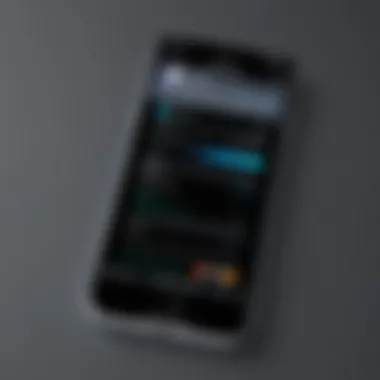
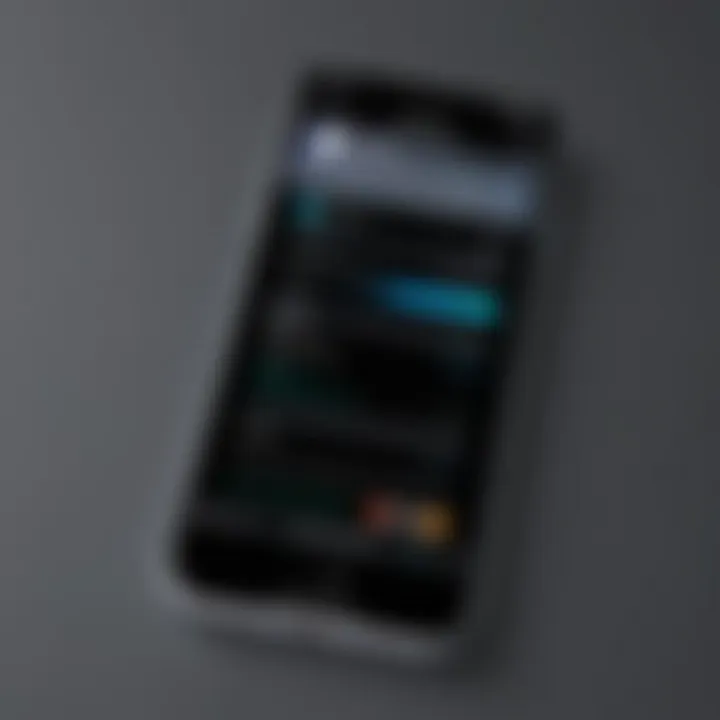
- Go to Settings on your iPhone.
- Tap on Wallpaper.
- Choose Choose a New Wallpaper.
- Select Photos to browse your gallery.
- After selecting the desired image, set it as your screensaver.
Images from the gallery offer a personal touch. They can evoke memories and feelings every time you unlock your phone. When selecting images, consider their clarity and colors. Bright images may stand out better than darker ones.
Using Third-Party Applications
For users who want more options or advanced features, third-party applications provide excellent alternatives. Apps like Zedge and WallpaperCraft are specifically designed for users seeking unique and customizable screensaver images. These applications often offer a variety of categories, from scenic views to abstract designs.
Benefits of Using Third-Party Apps:
- Variety: A far broader selection of images compared to the native gallery.
- Customization Features: Many apps allow you to edit images, applying filters or effects to make them truly yours.
- User Community: You can benefit from recommendations based on user experiences as well as trending images within the app.
It is crucial to ensure that you download these applications from reliable sources, such as the Apple App Store, to avoid any security issues.
Creating Personalized Collages
Another engaging way to customize screensavers is by creating personalized collages. Applications such as Canva or CollageIt enable users to combine multiple images into a single visually appealing composition. This approach allows you to showcase your favorites, whether it is a collection of travels, family moments, or artistic pursuits.
Steps to Create a Collage:
- Download a collage-making app from the App Store.
- Select images from your gallery.
- Use the app to arrange and customize them.
- Save the collage to your gallery.
- Set it as your screensaver following the previously mentioned steps.
Advantages of Collages:
- Creativity: It allows for infinite personalization, reflecting your interests.
- Memory: Evokes nostalgia, reminding you of special moments in life.
- Artistic Expression: You can express your artistic side while also making a statement.
Customizing your iPhone screensaver to reflect personal taste offers several advantages, including personalization and emotional engagement with your device. By selecting images from your gallery, using third-party applications, or crafting collages, you can create a visual experience that is uniquely yours. Whether it’s for aesthetics, sentimentality, or just to stand out, a well-chosen screensaver enhances the overall enjoyment of using your iPhone.
Impact of Screensavers on iPhone Performance
Screensavers serve multiple purposes on iPhones, but one significant aspect that often goes overlooked is their impact on device performance. Understanding how screensavers influence battery life, responsiveness, and device heat is fundamental for users aiming to optimize their iPhone experience. It informs decisions about personalization while maintaining efficiency.
Battery Life Considerations
A crucial factor in how screensavers affect iPhone performance is battery life. The choice of screensaver can determine how much energy your device consumes when not in use. Static images generally consume less power compared to dynamic wallpapers that involve animations and other elements.
To manage battery life effectively, consider opting for plain or low-resolution backgrounds if you frequently activate screensavers. This approach reduces the strain on your battery and prolongs its lifespan. Users must be mindful that having lively, interactive screensavers can lead to faster depletion of battery power, especially when the device is set to maintain brightness levels high during these periods. Thus, balancing aesthetics with efficiency is key.
Device Responsiveness
Screensavers also play a role in device responsiveness. When a screensaver is active, the device does not fully power down. This can provide quick access to applications and notifications. However, if the screensaver is resource-intensive—particularly with animations or heavy graphics—it can slow down the responsiveness of other applications running in the background.
An optimal choice of screensaver, therefore, should align with how you use your iPhone. Simple, non-demanding images allow for smoother transitions when switching from the screensaver back to default interface. This is especially important for users frequently multitasking or operating heavy-duty applications that require immediate responsiveness.
Heat Generation and Hardware Stress
Finally, it’s important to address the heat generation and hardware stress caused by screensavers. Certain screensavers, especially those with elaborate animations, can lead to increased processor activity. This can result in the device heating up, which may not only affect comfort for users but also reduce the overall lifespan of the hardware. Excessive heat can influence various components, leading to potential malfunctions over time.
Users should monitor the way their screensaver settings affect their device’s heat levels. If your iPhone feels unusually warm, it may be prudent to switch to a more simplistic screensaver or consider adjusting usage habits to reduce reliance on demanding visuals. The aim should always be to achieve a balance between aesthetics and performance to ensure that the device functions optimally over time.
In summary, selecting the right screensaver not only enhances visual appeal but also optimizes battery life, device responsiveness, and heat management.
Focusing on these performance aspects will enable users to enjoy their iPhones to the fullest while ensuring longevity and efficiency.
Popular Screensaver Apps for iPhones
The modern smartphone is not just a tool for communication; it is also a canvas where users express their individuality. Popular screensaver apps for iPhones play a crucial role in this personalization. They offer various options to customize the aesthetic appeal of the device while providing functional benefits. These apps often include dynamic features that can elevate the user experience. Thus, selecting the right screensaver app is important for anyone looking to enhance their iPhone's appearance.
Overview of Recommended Apps
When considering apps for screensavers, several standout programs deserve attention. These applications vary in functionality, design, and user interactions. Some recommended apps include:
- Zedge: Known for its extensive collection of wallpapers and ringtones, Zedge allows users to find trendy and unique screensavers.
- Walli: This app focuses on artistic wallpapers created by artists worldwide. It not only showcases striking visuals but also provides a platform for artists.
- Kappboom: A diverse app that offers high-resolution wallpapers across various categories. Kappboom features unique images that cater to different tastes.
- Live Wallpapers: A popular choice for those who prefer dynamic and interactive screensavers, offering animations that respond to user interactions.
These apps bring a vast range of choices to iPhone users. They allow for easy customization and enable individuals to adapt their screens to match personal style.
User Reviews and Experiences
User feedback is a valuable resource when exploring screensaver apps. Insights from users can help potential downloaders make informed decisions. Reviews on platforms such as Reddit or app stores often highlight specific experiences and preferences.
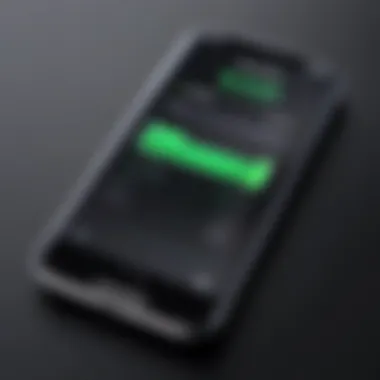
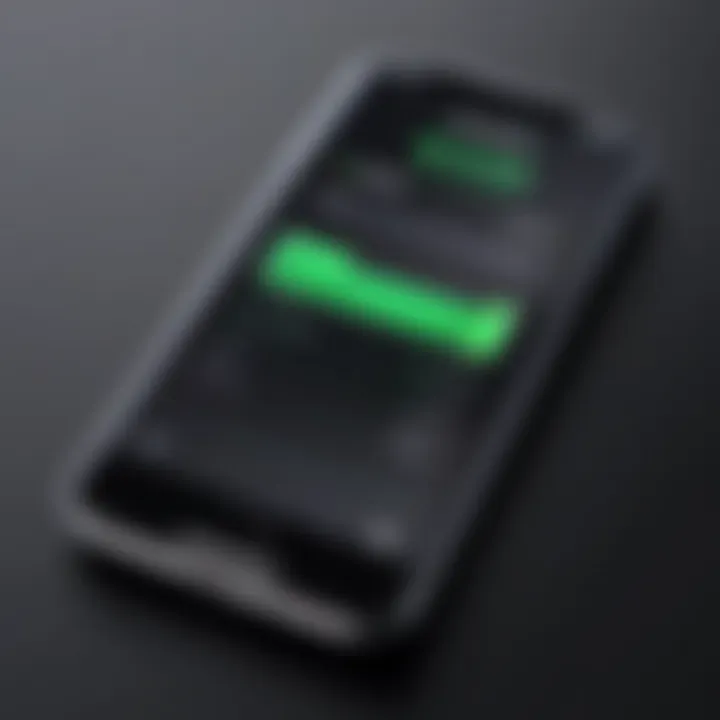
- Zedge: Many users appreciate the variety. A common theme in user reviews is the joy of finding unique wallpapers that stand out compared to stock options.
- Walli: Artists frequently comment on the beauty and distinctiveness of the artwork. Users express satisfaction from supporting artists directly through their downloads.
- Kappboom: Reviews indicate a user-friendly interface that makes navigation easy. The app's ability to set any found wallpaper as the lock screen or home screen is widely appreciated.
- Live Wallpapers: Users report mixed experiences. While some find the animations delightful, others mention concerns about battery consumption.
Troubleshooting Common Screensaver Issues
As with any technology, screensavers on iPhones can encounter issues that hinder their functionality. Understanding how to troubleshoot these problems not only enhances user experience but also maximizes the benefits screensavers provide. Few things are more frustrating than expecting your screensaver to activate and instead finding it unresponsive. Thus, having a grasp on common issues assists users in resolving them swiftly. This section explores specific issues that users might face with screensavers and provides solutions to ensure a seamless experience.
Screensaver Fails to Activate
One of the most common problems users face is when the screensaver fails to activate. This can stem from several factors. The first consideration should be whether the device is set to allow the screensaver to activate. Often, users may inadvertently change settings during updates or app installations.
Here are key factors to check:
- Settings Check: Go into "Settings" > "Display & Brightness" > "Auto-Lock". Ensure it’s set to a time duration. If it’s set to "Never", the screensaver will not start.
- Do Not Disturb Mode: If activated, this mode can prevent the screensaver from working as intended.
- Software Updates: Ensure your iPhone's software is updated to eliminate any bugs that might affect screensaver activation.
- Restart the Device: Sometimes, merely restarting the iPhone can resolve minor software glitches.
If these basic steps do not solve the issue, more advanced troubleshooting may be necessary.
Distorted Images or Glitches
Another issue that can occur is having distorted images or glitches in the screensaver. This not only affects aesthetics but can also disrupt the intended functionality of the screensaver. There are multiple reasons for this.
Consider the following points to address the problems:
- Resolution Settings: Ensure that the images used for the screensaver are of adequate resolution. Lower resolution images can appear pixelated or distorted.
- Image Format: Stick to supported file formats, such as .jpg or .png. Unsupported formats may not render correctly.
- Corrupted Images: Check if the images in use are corrupted. This can be done by trying alternative images to see if the problem persists.
- Reset Screensaver Settings: If multiple glitches occur across various images, resetting the screensaver settings to default might help.
These solutions aim to provide clarity and restore functionality to the screensaver on iPhones.
It is worth noting that regular maintenance, like software updates and monitoring settings, can prevent many issues associated with screensavers.
By understanding and addressing these common troubleshooting problems, users can continue to enjoy the aesthetic and functional benefits that screensavers bring to their iPhones.
Future Trends in Screensavers
The landscape of screensavers is evolving, particularly as technologies advance. In this section, we will examine possible directions for screensaver development on iPhones. Understanding these trends is vital for tech-savvy individuals and gadget lovers who want to keep their devices up to date. Future trends can offer significant benefits. They can enhance the personalization of devices, maintain user engagement, and ultimately, improve user experience.
Advancements in Technology
Technological advancements continue to influence the design and functionality of screensavers. More powerful processors and enhanced graphics capabilities enable smoother animations and transitions. Newer screensavers will likely be less resource-intensive while being visually appealing. Additionally, these advancements allow for screensavers that can adapt in real-time, reacting to changes in user behavior or environmental conditions.
Key Areas of Advancement:
- Increased Customizability: Users may have more control over how their screensaver functions, deciding its themes, animations, and triggers.
- Enhanced Interactivity: Future screensavers may incorporate features that allow users to interact with them, such as tapping to change images or even playing mini-games.
- Integration with Device Features: Screensavers might leverage other device capabilities, such as location data, to provide contextual information like weather updates or relevant news.
Integration with Augmented Reality
Augmented reality (AR) is another leading trend that could redefine screensavers for iPhones. With Apple's continued investment in AR, the potential for screensavers to blend digital elements with the real world is substantial. Imagine walking into a room, and your screensaver transforms your surroundings, adding relevant information or art overlays in real-time. This integration can increase the functionality of screensavers beyond mere decoration.
Benefits of AR Integration:
- Enhanced Visualization: Users can visualize different designs and images overlaid in their actual environment, making screensavers more dynamic.
- Increased Engagement: By engaging users in a multisensory experience, AR becomes a tool for deeper interaction with the content.
- Possibly Social Features: Future screensavers might allow sharing AR experiences among users, creating a sense of community around the content.
In summary, future trends suggest a shift toward more integrated, interactive, and personalized screensavers for iPhones. This direction inspires users to adapt their devices in ways that enhance both aesthetics and functionality, thereby enriching overall user experience.
Ending
In this comprehensive guide, we explored the multifaceted world of screensavers on iPhones. The topic reveals the significant role screensavers play beyond mere aesthetics. They enhance personalization, allowing users to express their individual style through vibrant images and dynamic backgrounds.
One key element discussed is the battery conservation benefits associated with effective screensaver usage. By optimizing settings, users can prolong battery life, a fundamental consideration in our mobile-driven lives. Additionally, we examined the impact of screensavers on iPhone performance, noting how they can affect device responsiveness and heat generation.
Benefits of utilizing screensavers include:
- Aesthetic enhancement of devices.
- Protection of screens from burn-in effects.
- Contribution to battery efficiency.
Each of these facets underscores the importance of not just selecting any screensaver, but choosing one that enhances usability while protecting the device. As technology progresses, the integration of advanced features such as augmented reality into screensaver applications may redefine our experience further.
Overall, understanding the function and options available for screensavers equips users with tools to improve their device experience. Making informed choices cultivates a smarter approach to device management in a tech-savvy world.
Recap of Key Points
- Personalization: Screensavers allow users to customize their devices uniquely.
- Protection: They help guard against screen burn-in and preserve screen integrity.
- Battery Saving: Properly set screensavers can enhance battery performance by reducing unnecessary screen activation.
- Variety: Different types of screensavers cater to different preferences, from static images to dynamic and interactive options.
- Customization: Various methods exist for selecting and creating personalized screensavers, including third-party applications.
Final Thoughts on Screensaver Usage
As we conclude this guide, it is vital to reflect on the screensaver's importance in daily usage. Screensavers are not merely decorative; they serve functional purposes. By engaging with various options and understanding their capabilities, users can find harmony between form and function. In consideration of future advancements, keeping abreast of trends will also benefit users in leveraging their devices.
Ultimately, the choice of a screensaver can reflect user identity while contributing positively to overall device performance.



